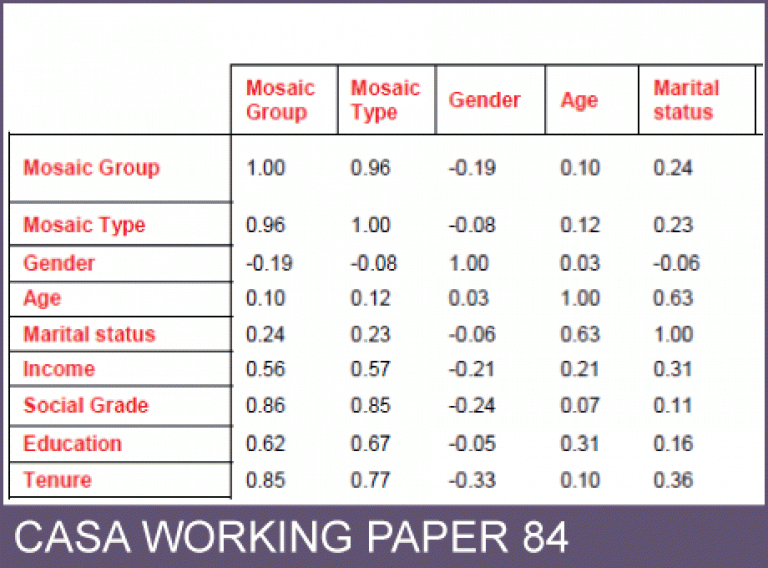CASA Working Paper 84

1 October 2004
The relative power of geodemographics vis a vis person and household level demographic variables as discriminators of consumer behaviour
Geodemographics is a field of study which involves the classification of consumers according to the type of neighbourhood in which they live. As a method of segmenting consumers it has long been of value to direct marketers who, being often unable to identify the age, marital status or occupational status of people in mailing lists, found it a useful means of applying selectivity to their mail shots. By analysing the behavioural characteristics of consumers in different types of neighbourhoods they found they could improve business performance by targeting promotional activities to names and addresses falling within specific types of postcode. From direct marketing the application of geodemographics spread to the targeting of door to door distribution and customer communications and to the retail industry where it was found to be useful input into the process of deciding where to site new outlets. Government is increasingly using such methods to improve the targeting of its own communications to tailor local service delivery to the particular needs of local communities.
During the 25 years since geodemographics was first introduced few users have had a clear understanding of precisely neighbourhood differences come about. Are differences in consumption patterns at neighbourhoods level simply the predictable result of differences in the age, household composition, educational status or occupational profile of their residents? Or do additional, incremental neighbourhood effects operate? When deciding neighbourhoods to live in do people select ones whose values and consumer preferences are broadly similar to their own? Or is it only after they have moved that their behaviours change, as they become subject, consciously or not, to the prevailing ethos of the new community in which they find themselves?
To set these alternative explanations this study analyses a random set of consumer behaviours covered by the Target Group Index, one of a number of market research surveys whose respondents have been coded by the type of neighbourhood in which they live; it uses a statistic to measure the extent to which the Mosaic geodemographic system is effective in discriminating on these behaviours; it then measures the relative effectiveness of other frequently used household and person level demographics in predicting of these behaviours; finally it compares the predictive efficiency of different discriminators.
The conclusion that can be drawn from the exercise is that, across these behaviours as whole, the type of neighbourhood in which a consumer lives is a significantly more predictive piece of information that any person or household level discriminator (such as age or social grade). By implication therefore it is almost certain that significant neighbourhood effects must operate for many of the behaviours tested. However the relative discriminatory power of geodemographics and person and household level discriminators varies considerably from behaviour to behaviour. Even when taking measures of status which one might have expected to be highly correlated, such as social grade, terminal education age or household income, there are considerable differences in their relative predictiveness across most consumer behaviours.
This working paper is available as a PDF. The file size is 198KB.
Authors: Richard Webber
Publication Date: 1/10/2004
 Close
Close

